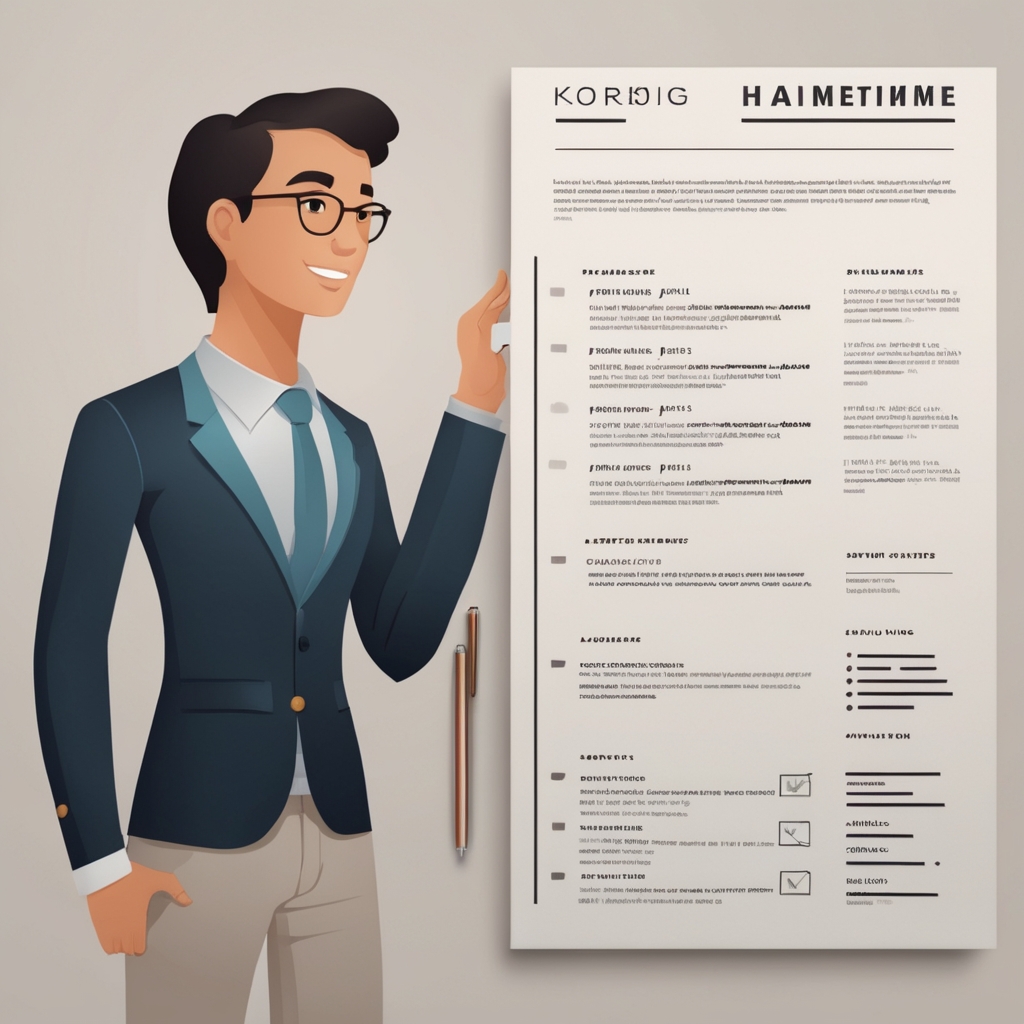You’re sitting there at 11 PM, staring at your resume, and that voice in your head keeps asking “Should I include that weird three-month job at the startup that failed? What about my first job from 2012 – does that make me look old? Am I overthinking this?”Yes, you’re probably overthinking it.
The quick answer is that there’s no magic formula that works for everyone. Your resume isn’t about following some arbitrary rule you found on the internet. It’s about telling your story in a way that makes hiring managers think, “I need to talk to this person.”
So let’s stop obsessing over the “perfect number” and start figuring out what actually belongs on your resume.
How Many Jobs Should Appear On Your Resume?
A general rule is to include about 10-15 years of work history. That usually means somewhere between 3-7 jobs, depending on how long you stayed at each place.
But here’s the thing – and this is important – that’s just a starting point. If you’re fresh out of college, you might only have 2 jobs and an internship. That’s perfect. If you’re a seasoned pro with 25 years of experience, you definitely shouldn’t list all 12 jobs you’ve had.
The real question isn’t “how many jobs should I list?” It’s “which jobs help me get the interview?” And that’s what we’re going to figure out.
Why This Actually Matters (More Than You Think)
Let me tell you something that might surprise you: hiring managers spend about 6-8 seconds looking at your resume before deciding if you’re worth their time. That’s it. Six seconds.
In those six seconds, they’re not counting your jobs like some sort of career accountant. They’re asking themselves three questions:
- Can this person do the job I need done?
- Will they fit in with my team?
- Are they going to stick around long enough to make it worth training them?
Every single job you put on that resume needs to help answer one of these questions. If it doesn’t, it’s just taking up space.
Think about it this way: your resume is like your highlight reel, not your complete biography. Nobody wants to see every single play you’ve ever made – they want to see the plays that prove you can win games.
Let’s Get Specific: Where Are You in Your Career?
(0-5 Years)
If this is you, you can go ahead to include pretty much everything that’s even remotely relevant. I know it might not feel like much, but you’re building your foundation here.
What to include: The part-time customer service job that taught you how to handle difficult people? Absolutely include it. Any volunteer work that shows leadership or relevant skills? Don’t leave it off.
What you might skip: The summer job at the ice cream shop probably doesn’t need to be there unless it demonstrates something specific like sales skills or working in a fast-paced environment.
If you had multiple similar roles (like three different retail jobs), group them together under something like “Retail Experience” and list the companies underneath. This shows you have experience without making it look scattered.
(5-15 Years)
This is where it gets fun. You finally have enough experience to be picky about what you include, but you’re not drowning in decades of history yet.
Focus on the last 10-15 years, especially roles that show you’re moving up in the world. If you made a career change, make sure your resume tells that transition story clearly.
You can start summarizing your really early stuff. Instead of listing your first three jobs individually, try something like “Additional experience in administrative and customer service roles (2010-2014).” This acknowledges you have the experience without eating up valuable real estate.
(15+ Years)
Stick to the last 10-15 years of progressively responsible roles. Focus on leadership, strategic wins, and the kind of impact that makes CFOs smile.
What about all that early experience? Consider an “Earlier Career Highlights” section where you can mention significant roles or companies without going into the day-to-day details. This way, you acknowledge your full experience without cluttering your resume.
How Different Industries May Affect Your Resume
Different industries have completely different expectations about job changes, so let’s address the elephant in the room:
Tech Industry: The Tech industry is notoriously fast-paced, and employers know it. Two-year stints are normal. Six-month contracts at startups that got acquired or shut down? That’s just Tuesday in tech. Focus on the problems you solved and the technologies you mastered.
Traditional industries (finance, healthcare, manufacturing): These sectors still value stability. If you’ve had several short-term roles, you’ll want to have good explanations ready. Use your cover letter to tell the story behind each move.
Consultants and contractors: Group similar projects under broader headings. Instead of listing 15 different client engagements, try “Digital Marketing Consultant” with key clients listed underneath.
Creative industries: Your portfolio matters more than your tenure. Include roles that show the breadth of your creative abilities and business impact.
Question You May Have About Listing Jobs On Your Resume
“I Look Like a Job Hopper”
If you’ve had several jobs that lasted less than two years each, take a deep breath. You’re not doomed. Here’s how to handle it:
- If some of those were contracts or projects, group them under a consulting umbrella
- Use your cover letter to briefly explain the context (layoffs, company closures, planned career moves)
- Focus heavily on what you accomplished in each role, not just how long you were there
- If you’ve recently had a longer-term role, make sure it’s prominent
“I Have This Weird Gap in My Employment”
Gaps happen. Life happens. Don’t try to hide them by listing irrelevant jobs just to fill the space. Instead:
- Be prepared to explain the gap honestly and positively
- Include any volunteer work, freelance projects, or education during that time
- Consider whether a functional resume format (organized by skills rather than chronology) might work better for you
“I’m Worried I Look Overqualified”
This is a real concern, especially if you’re applying for roles that seem like a step down. Don’t list every impressive job you’ve ever had if it’s going to price you out of opportunities you actually want.
How To Decide If A Job Is Relevant Enough To Be Listed
Before including any job on your resume, ask yourself these questions:
The Relevance Test:
- Does this role show skills that matter for my target job?
- Does it demonstrate career growth or a logical story?
- Does it fill an important gap in my timeline?
- Does it show something unique about me?
If you can’t answer “yes” to at least two of these, consider leaving it off.
The Achievement Test: Can you articulate specific accomplishments from this role? If you’re struggling to come up with meaningful achievements, that job might not be worth the space.
The Space Test: Your resume should be 1-2 pages for most professionals (3 pages max for very senior roles). If including every job makes it too long, prioritize the most recent and relevant positions.
Special Situations
Multiple promotions at the same company: List each role separately. This shows loyalty AND growth – employers love this.
Working multiple jobs at once: List them separately with overlapping dates, or create an “Additional Experience” section for side work.
Really short-term roles: If a job lasted less than three months due to circumstances beyond your control (company went under, position was eliminated), you can often leave it off without creating a noticeable gap.
Career changes: Focus on transferable skills. Include relevant roles even if they seem like a step backward in terms of title or pay. The goal is showing a logical bridge between where you were and where you’re going.
What Hiring Managers Actually Care About in 2025
Here’s the truth: hiring managers want to know three things. Can you do the job? Will you fit with the team? Will you stick around long enough to make hiring you worth their time?
Your job isn’t to list every place you’ve ever worked. Your job is to curate your experience in a way that answers these questions confidently.
Focus on creating a coherent narrative about your professional growth. Each job should build on the previous one, showing how you’ve developed new skills, taken on more responsibility, or deepened your expertise.
And remember – your resume is just one piece of the puzzle. A strong LinkedIn profile, thoughtful cover letters, and smart networking can all help provide context for any concerns about your work history.
Or You Can Get A Resume Already Done For You
While we’re talking strategy, don’t forget that many companies use software to screen resumes before humans ever see them. Your carefully crafted career story needs to be formatted properly to make it through these systems.
Tools like LightResume can help ensure your resume is both strategically smart and technically sound. You want your career progression to shine through while making sure it passes the robot test first. Click here to try out LightResume today and give yourself a chance to get hired instantly.




